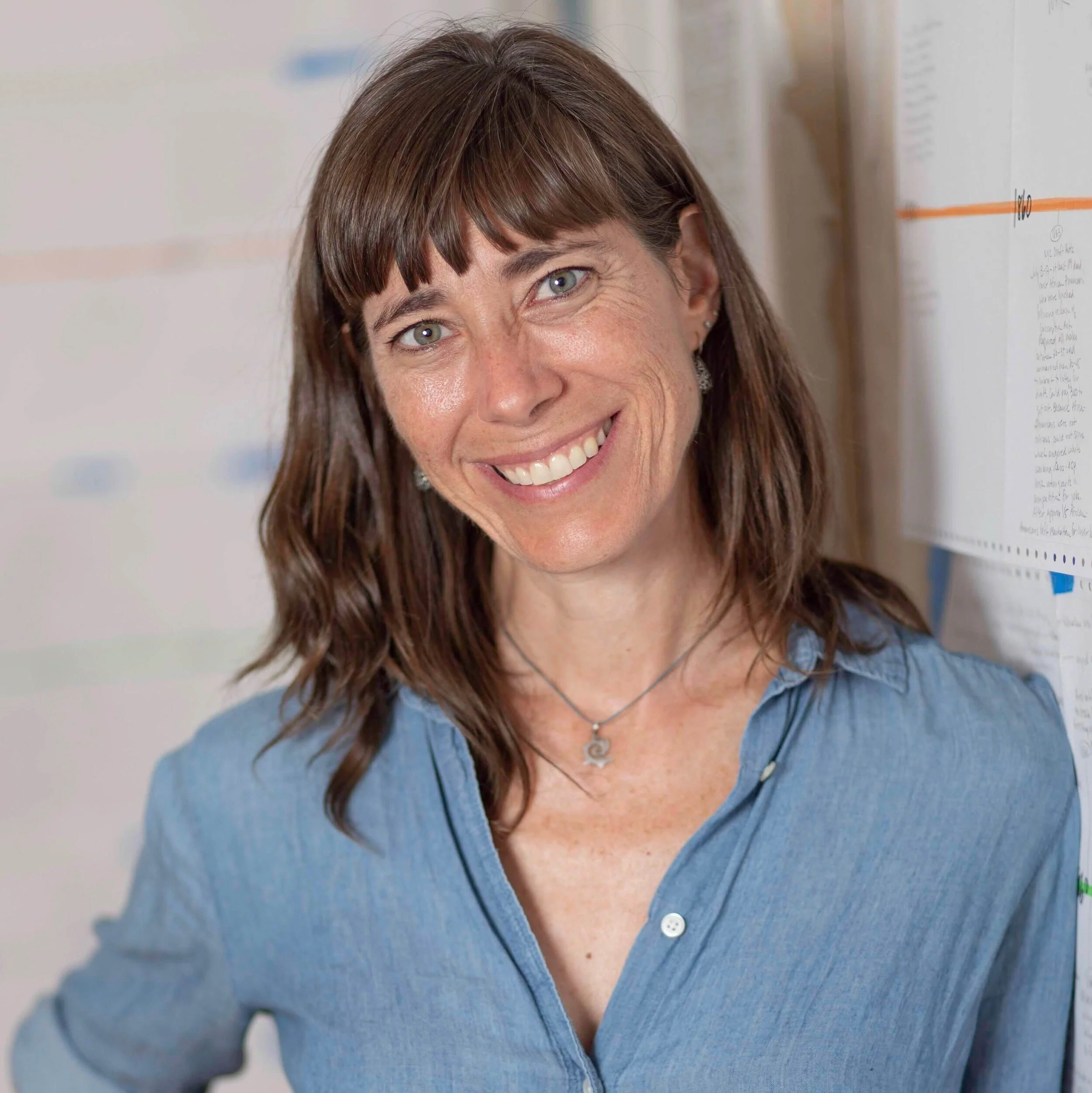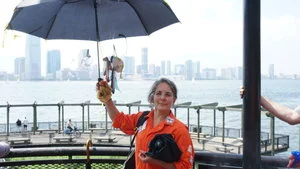Curatorial team member Katie Pearl invites all participants in Works on Water - artists, scientists, collaborators, experts, viewers, audience - to return to 3LD one last time. Together we’ll take a final look, reflecting on the exhibition. In light of the curatorial team’s original vision and their plans for a Works on Water triennial, what was our experience? What new connections were discovered? How has WOW provided (or not provided) space for needed civic and creative conversations?
Place Making, Place Taking, Place Keeping
Led by Emily Blumenfeld with Olivia Georgia from City as Living Laboratory and Damian Griffin from the Bronx River Alliance
In the funding world, Creative Placemaking is trending. But in the art world, "placemaking" itself is a problematic term because it can also refer to development. This conversation points us toward three terms: place making, place taking, and place keeping. Which one is at work in any given context? Who is doing the making, what is the motivation? As we consider placemaking in collaboration with the waterways other questions come up as well: what’s worth keeping, what’s worth changing, what’s worth making anew? How does our work intersect with both environmental and economic justice?
Micro to Global
How do we engage with an element that is simultaneously so vast and so small? From droplets and micro-plastics, to global shipping routes and surveys across centuries, this conversation will explore how artists and scientists turn to the furthest limits of size, space, and time to investigate both our relationship with water and water’s relationship to us.
Time and Tide: A Literally Immersive Performance and the New Climate Temporalities
Led by Eco-Critic and NYU professor Una Chuadhuri
Participants include WOW artist and curatorial team member Sarah Cameron Sunde (36.5) and Awam Amkpa, author of Theatre and Post-Colonial Desires
What happens when the dimension of human life that has long been the very definition of predictability--the climate--becomes utterly unpredictable? How can art create new embodied knowledge for living in this time of "The Great Acceleration"? Eco-critic Una Chaudhuri and a panel of scientists and artists will engage Sarah Cameron Sunde about her ongoing project "36.5: A Durational Performance with the Sea."
Water (Em)Power
When did the narrative around our waterways become dominated by fear and danger? Instead of seeing the waterways as a threat and focusing on all the ways it can hurt us, the work of these participants shift the pervading rhetoric towards one of action. To face climate change, we must feel empowered to do so. WATER [em]POWER focuses us toward artists, organizations, and individuals who engage in building our relationship to the waterways as a means of discovery, knowing, and empowerment.
Making the Invisible Visible: Responses to Water Based Stresses In NYC and Beyond
Unexpected and profound disasters like Hurricane Sandy smash into the lives of everyday New Yorkers, forcing us to engage with our proximity and relationship to water. But slow, ongoing crises like rising water levels, contamination, and toxicity are harder to see, more challenging to grasp, and harder to respond to. Across disciplines, artists and experts are engaging in work that analyzes and responds to the slow disasters of our water, making the invisible visible. We’ve assembled a group of them for this conversation-- come meet and hear them discuss their projects and points of view here.
Advocacy Splash Down
At one time, art was science's illustrator. Water Art today can go well beyond illustration to serve science and the natural world directly by posing questions, exposing realities, acquiring data, advocating for natural resources, and-- in some cases-- affecting policy change. When Art Advocates for Water promises to be a lively conversation, with New York Aquarium Resident Artist Christy Gast launching the conversation by sharing a 5 minute stop-motion film created by a team of artists working with teens doing advocacy around ocean plastics. Joining her will be Noah Chesnin of the New York Seascape Program; New York Times Business Day editor Ellen Pollock, and some of WOW's core artists whose work directly or indirectly advocates for policy change.
Get In! Water and Play
Led by Rachel Karpf of Guerilla Science
It's no secret that bringing playful exploration into our work often leads to more surprising and impactful outcomes than staying stuck in our 'expert' brains. But how does play work when we're exploring the water? What does it mean to GET IN-- to get our hands wet-- figuratively, and literally? This conversation brings together Hudson River Park Trust Director of Science Carrie Roble, artist/scientist Clarinda Mac Low from Tryst, science-driven creative agency Guerilla Science, to flood us with ideas around physical engagement, interactivity, exploration, and playfulness on the water with a purpose.
The Power of Ten
Working creatively with water and waterways is inherently interdisciplinary, and requires artists and other creative people to infiltrate and collaborate with many different sectors. The Power of Ten is an opportunity to intersect with people from different fields, and imagine collaboration. All thinkers and doers are welcome–scientists, social/environmental justice activists, designers, artists, performers, planners, architects, and more.
The 10-Year Process: Callaghan & Topol in collaboration
Led by New Georges Artistic Director Susan Bernfield with playwright Sheila Callaghan, director Daniella Topol, Rachel Karpf of Guerilla Science and members of the creative team
Ten years ago, playwright Sheila Callaghan and director Daniella Topol set out to make a play about water. Their exploration covered multiple processes, two design teams, two coasts, water-related incidents worldwide —and many drafts and devisings. New Georges producing Artistic Director Susan Bernfield will chat with Sheila and Daniella about their singularly rich and deep-rooted collaboration and the bittersweet experience of finally seeing their project produced. We’ll add actors April Matthis and Polly Lee, who’ve been with the project most of the way (and whose current roles draw directly from the experience); and pull up to the present with current collaborators, including science dramaturg Rachel Karpf of Guerilla Science—all tracing the unexpected and astonishing journey to (NOT) WATER.
Bringing Multiplicity to the Table
Art engaged with ecology offers new forms of environmental engagement and advocacy, yet the community of artists working on NYC waterways represents a relatively narrow range of perspectives, compared to those that make up many of the communities along the water’s edge. Bringing Multiplicity to the Table invites organizations who excel at engaging a broad spectrum communities in art, culture, and ecology through a wide range of methods. At this Long Table conversation, WOW artists Eve Mosher and Nancy Nowacek join these representatives as well as practitioners from the fields of art, maritime ecologies and community activism to discuss methods of engagement and strategies towards multiplicity around the NYC waterways. Note: The Long Table format (developed by performance artist Lois Weaver), is designed to equalize audience and invited participants, by providing a simple and specific structure for listening and conversation.





